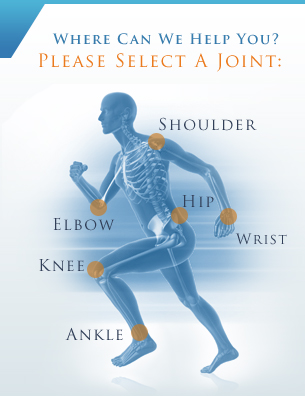
Shoulder Arthroscopy
|
|
Shoulder Instability Surgery
 Shoulder instability is a condition that involves a loose shoulder joint that slides around too much in the socket after an injury. This can cause frequent slipping (subluxation), dislocation and may lead to arthritis. Shoulder instability can occur after a previous shoulder dislocation, and is also common in young athletes and double jointed people.
Shoulder instability is a condition that involves a loose shoulder joint that slides around too much in the socket after an injury. This can cause frequent slipping (subluxation), dislocation and may lead to arthritis. Shoulder instability can occur after a previous shoulder dislocation, and is also common in young athletes and double jointed people.
Treatment for shoulder instability usually begins with physical therapy and rehabilitation, but some people may need surgical treatment. Instability surgery varies depending on the cause of the condition, but usually aims to tighten the loose ligaments of the shoulder. The most common types of instability surgery include:
- Bankart Repair - used for shoulders prone to dislocation and removes torn and degenerative tissue and any bone spurs that rub on the tendons of the shoulder. The torn ligaments are then reattached to the bone with suture anchors.
- Capsular Shift - used to decrease and tighten the joint capsule, the lining of the joint, when it is too large.
Both of these surgeries can be performed through arthroscopy, which allows for minimally invasive procedures with smaller incisions and shorter recovery times.
Labral Injury Treatment
The socket of the shoulder, or glenoid, is covered with a layer of cartilage called the labrum that cushions and deepens the socket to help stabilize the joint. Traumatic injuries and repetitive overhead shoulder movements can tear the labrum, leading to pain, limited motion, instability and weakness in the joint.
Symptoms of a labral injury can include shoulder pain and a popping or clicking sensation when the shoulder is moved, as well as rotator cuff weakness. One of the most common labral injuries is called a SLAP lesion, a tear where the biceps tendon meets the glenoid. Another kind of labral injury is a Bankart lesion, where the labrum pulls off the front of the socket. This happens most often when the shoulder dislocates. If a Bankart tear doesn't heal properly, it can facilitate future dislocations, instability, weakness and pain.
Labral Tear Repair
 A labrum is a protective cuff of cartilage found in ball and socket joints like the hip and shoulder. They provide more stability, cushioning and a full range of motion for these shallow joints. A tear in the labrum, known as a labral tear, is caused by injury or overuse and can lead to pain and "catching" of the joint while moving.
A labrum is a protective cuff of cartilage found in ball and socket joints like the hip and shoulder. They provide more stability, cushioning and a full range of motion for these shallow joints. A tear in the labrum, known as a labral tear, is caused by injury or overuse and can lead to pain and "catching" of the joint while moving.
While many labral tears can be treated by managing pain symptoms and undergoing physical therapy, some cases require surgical treatment. Labral repair surgery aims to repair unstable shoulders with staples, anchors or sutures. The procedure is usually performed through arthroscopy, which allows the doctor to view the tear through a small camera and perform the procedure through tiny incisions. Larger tears may require an open procedure.
Labral repair surgery is usually effective in treating labral tears and restoring full movement and strength. Recovery time depends on the type of procedure but usually takes several months.
Shoulder Arthroscopy
Arthroscopy is a minimally invasive surgical technique that involves several small incisions into which a fiber-optic device (arthroscope) and tiny surgical instruments are inserted. Orthopedic surgeons can diagnose and treat many different shoulder conditions with arthroscopy, while patients can benefit from less tissue damage, shorter recovery times, less scarring and less post-operative pain. This technique also avoids cutting any muscles or tendons in order to gain access to the affected area.
Shoulder arthroscopy is often performed to confirm a diagnosis after a physical examination and other imaging procedures have been performed. Some conditions can also be treated during the same procedure by inserting a few additional instruments into the joint area.
Arthroscopy can be used to treat many conditions that affect the shoulder joint. Shoulder arthroscopy, also known as shoulder scope, can be used to treat:
- Rotator cuff tears
- Labral tears
- Impingement syndrome
- Biceps tendonitis
- AC joint arthritis
While arthroscopy offers many benefits over a traditional open procedure, it is not for everybody. Some conditions, especially those that are not easily visible with the arthroscopic camera, may be better suited for traditional surgery. Your doctor will decide which type of procedure is right for you.









